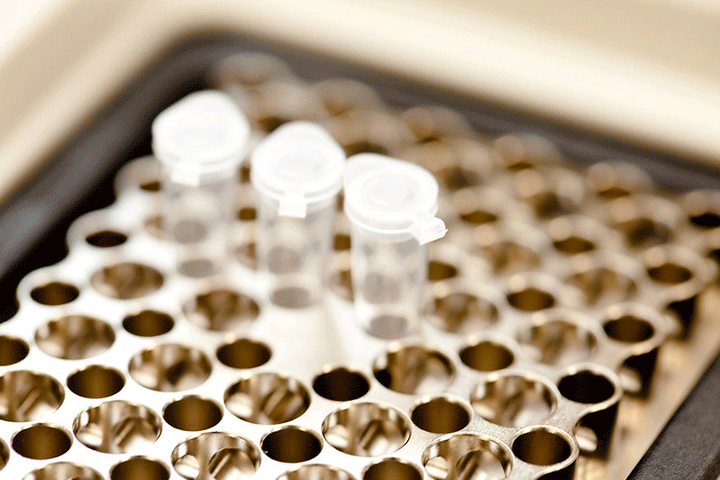Two Enzymes May Predict Pancreatic Cancer Severity and Development

For more than three decades, a group of enzymes called protein kinase C (PKC) were viewed as the supposed bad guys, tumor promoters that helped cancer cells grow and migrate throughout the body.
The thought was that if these enzymes were inhibited by a drug that could decrease, limit, or block function, cancer treatments like chemotherapy would be able to do the job of killing cancer cells. Patients would live longer, maybe even be cured. Yet, clinical trials with drugs designed as PKC-inhibitors were a failure, and in some cases, patients actually did worse.
But about four years ago, a team of researchers at the University of California, San Diego (UCSD) School of Medicine made a startling discovery. PKCs aren’t bad guys after all. They’re actually tumor suppressors, technically oncoprotein suppressors, meaning they’re part of a biological process that stops the unbridled cell division and growth of cancer. “Understanding the target is essential to develop effective therapies, and as a biochemist studying the molecular mechanisms of what turns PKC on and off for years, we were poised to figure out what happened to PKC in cancer. To our surprise, we found out that PKC function is lost in cancer, overturning the dogma that it was an oncoprotein,” explains Alexandra Newton, Ph.D., professor in the Department of Pharmacology at the UCSD School of Medicine, who led the study. “This study showed that maybe the way to go is to find ways to boost PKC activity, not inhibit it.”
The Pancreatic Cancer Connection
Now, Newton and her team have found more intriguing information about PKC: According to their new study published in the journal Molecular Cell, a person’s levels of PKC along with levels of another enzyme called PHLPP1 (pronounced ‘flip one’) might be able to predict pancreatic cancer severity and development. “We wanted to take the research further to try to figure out how our cells, how our biology, regulates PKC,” Newton says. “So the question was: If a lot of PKC is good, what is it in the cell that allows for a lot of PKC?”
In the lab, the team looked at about 1,000 different tumor samples from many different types of cancers. (The team collaborated with Gordon Mills, M.D., Ph.D., of the OHSU Knight Cancer Institute, Portland, Oregon, to analyze a database of tumor protein data that also includes the patient information associated with each tumor.) One cancer type that stood out to them was pancreatic cancer, because in this cancer having high levels of PKC had a clear survival advantage. Among the 105 pancreatic tumor samples, those with low levels of PKC did not do well. In fact, no pancreatic patient with low PKC in the database survived longer than five-and-a-half years. But half of the patients with high PKC levels survived longer than that.
Keeping Enzymes In Balance
Yes, having a lot of PKC in pancreatic cancer does seem to be of benefit. But what they found is that the relationship between PKC and PHLPP1 is critical. Graduate student Tim Baffi found that PHLPP1 is like a proofreader, a kind of quality control manager, that helps regulate the amount of PKC, Newton explains. Among the 105 pancreatic tumor samples, those with high levels of PHLPP1 had low levels of PKC and those with low levels of this proofreader had high levels of PKC.
One way to look at the proofreading role of PHLPP1 is to think of the iconic “I Love Lucy” episode where Lucy and Ethel are working at a conveyor belt pumping out sweet treats; their job is to wrap them. The sweet treats are the enzyme PKC. When all is working well, the women can wrap the treats with little problem (and our body would have a processed, functional PKC enzyme). But when that conveyor belt started speeding up and pumping out too much candy too quickly, the result was catastrophic and the treats could not be wrapped fast enough.
That’s where PHLPP1 comes in. It gets rid of this unwrapped candy, so to speak. And it also decides how much wrapped candy makes it through. So high amounts of PHLPP1 means very little wrapped candy. “It’s a simple way to look at it, but it is kind of what happens biologically with these two enzymes,” Newton notes. “PHLPP1 surveys newly-made PKC to ensure that only good PKC accumulates in the cell and, in addition, that the right amount accumulates. For example, when an overactive PKC is produced for whatever reason, PHLPP1 is going to go and destroy it.”
The hope is that the ratio of a pancreatic cancer patient’s PHLPP1/PKC levels can someday be used as a predictor for prognosis. “If a pancreatic cancer patient has high PHLPP1 and low PKC we would know the prognosis isn’t good, but potentially we could inhibit the right target, the PHLPP1, which would then boost PKC levels,” Newton explains. “The result could be improved survival.”
Newton’s team and colleagues will be looking at various chemical compounds to figure out those that can inhibit PHLPP1 and restore PKC levels. “We have already developed some inhibitors for PHLPP1, so we can treat low-PKC pancreatic cancer cells as a first step to validating PHLPP1 as a druggable target to enhance PKC,” Newton says. “The biochemistry of PKC has been studied for years, and now, with all the data available from tumor samples, we’re able to learn so much more about targeting it in cancer. So taking the next step in helping to design new therapies for pancreatic cancer would just be such a tremendous help to patients.”






